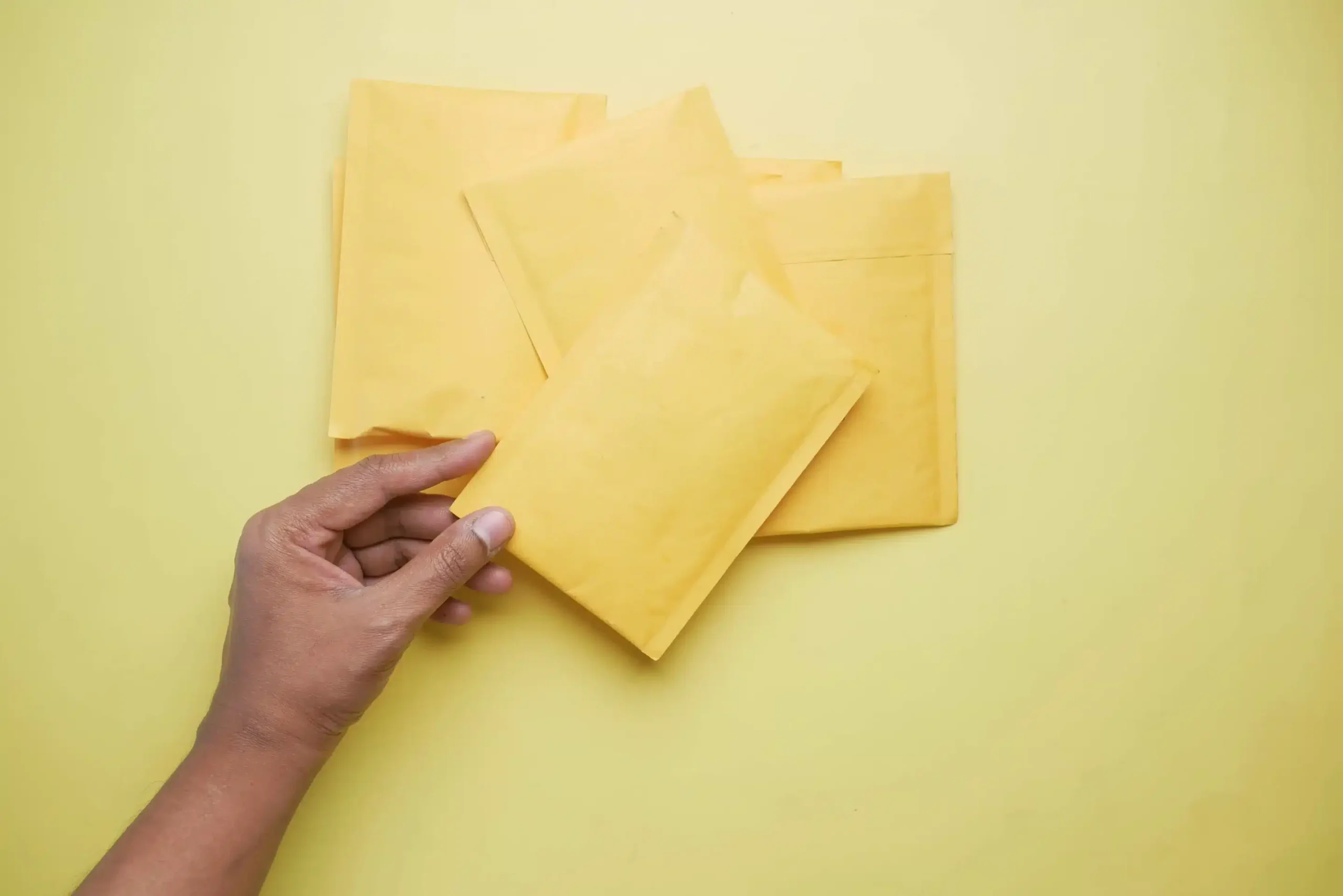
When it comes to shipping fragile items, choosing the right packaging material is crucial to ensure your precious cargo arrives at its destination intact.
Two popular choices for protecting fragile items during shipping are bubble mailers and packing peanuts.
In this blog, we’ll explore the differences between bubble mailers and packing peanuts to help you make an informed decision about which is better for shipping your fragile items.
Let’s start!
Bubble mailers, also known as bubble envelopes or padded mailers, are a favourite choice for shipping fragile items. They are made of a combination of bubble wrap and a durable outer layer, usually made of paper or plastic. Here are some of the advantages of using bubble mailers:
Bubble mailers provide excellent cushioning for fragile items. The air-filled bubbles absorb shocks and impacts during transit, helping to protect your items from damage.
Bubble mailers are lightweight, which can be a cost-effective choice for shipping, especially for items that do not require heavy packaging.
Bubble envelopes take up less space compared to packing peanuts. This can be a significant advantage when you have limited storage space or need to ship multiple items together.
Bubble mailers come in various sizes and can accommodate a wide range of fragile items, from small electronics to jewellery and documents.
There are different types of bubble mailers such as padded bubble mailers, poly bubble mailers and more, catering to our different needs and requirements.
Many bubble mailers come with a self-sealing adhesive strip, making them easy to use and ensuring a secure closure.
Packing peanuts, also known as foam peanuts or packing popcorn, are another common choice for protecting fragile items during shipping. These small, lightweight foam pieces can be placed around the item in the shipping box to create a cushioning effect. Here are the advantages of using packing peanuts:
Packing peanuts can provide excellent cushioning and protection for fragile items, especially when used in combination with other packing materials.
They can be used to fill empty spaces in the shipping box, ensuring that the item stays in place during transit.
Packing peanuts are often reusable, making them a more sustainable option compared to single-use bubble mailers.
When shipping large and heavy fragile items, packing peanuts can be more cost-effective than bubble mailers due to their ability to fill empty spaces efficiently.
However, packing peanuts have their drawbacks:
One of the biggest drawbacks of packing peanuts is that they can be messy. They tend to cling to items and can create a mess when unpacking, which can be frustrating for both the shipper and the recipient.
Many packing peanuts are made from expanded polystyrene (EPS), which is not biodegradable and can be harmful to the environment.
Packing peanuts can take up a significant amount of space in your storage area, and they can also increase shipping costs due to the extra weight and volume they add to the package.
So, which is better for shipping fragile items: Bubble mailers or packing peanuts? The answer depends on your specific needs and preferences.
If you are looking for a lightweight, space-efficient, and easy-to-use option that provides good cushioning for most fragile items, a bubble mailer or bubble wrap envelope is a solid choice. However, keep in mind that they may not be suitable for extremely delicate or valuable items.
On the other hand, packing peanuts offers excellent cushioning and can be cost-effective for larger items. They are also more sustainable when reused, but they can be messy and take up storage space.
In the end, it’s essential to assess the fragility of your items, your budget, and your environmental concerns when choosing between bubble mailers and packing peanuts. In some cases, a combination of both materials might be the best solution, providing optimal protection while minimizing waste.
WhatsApp us